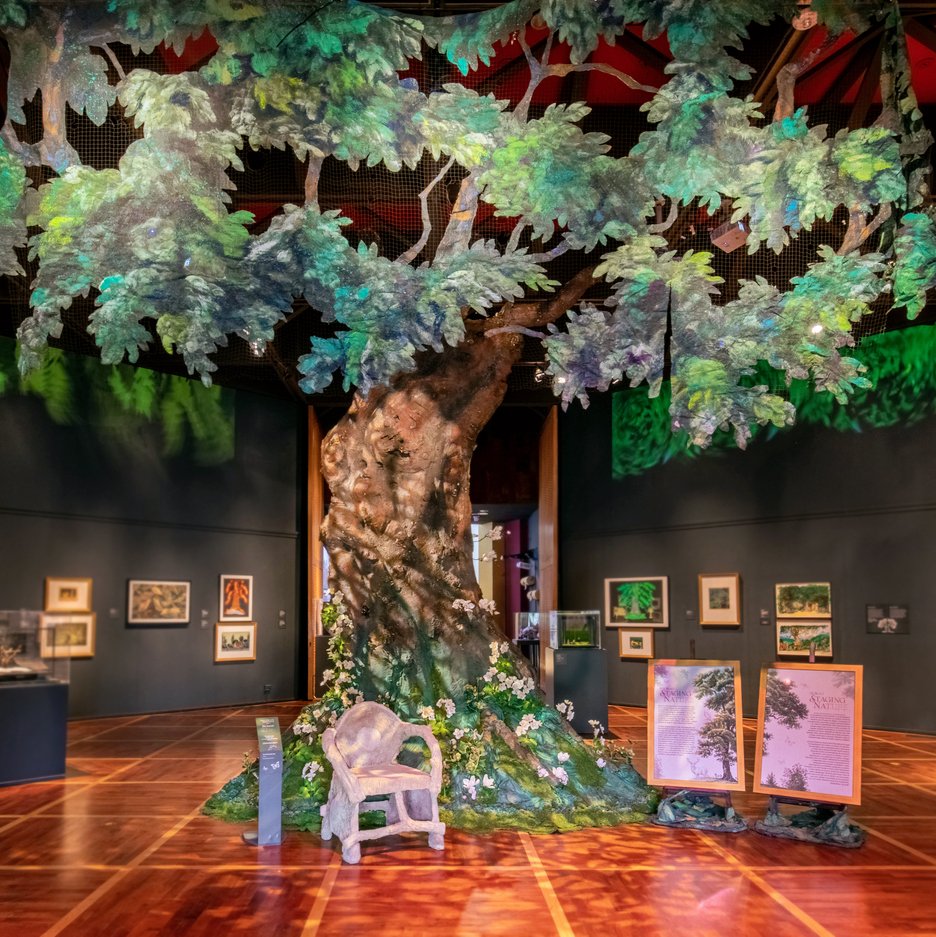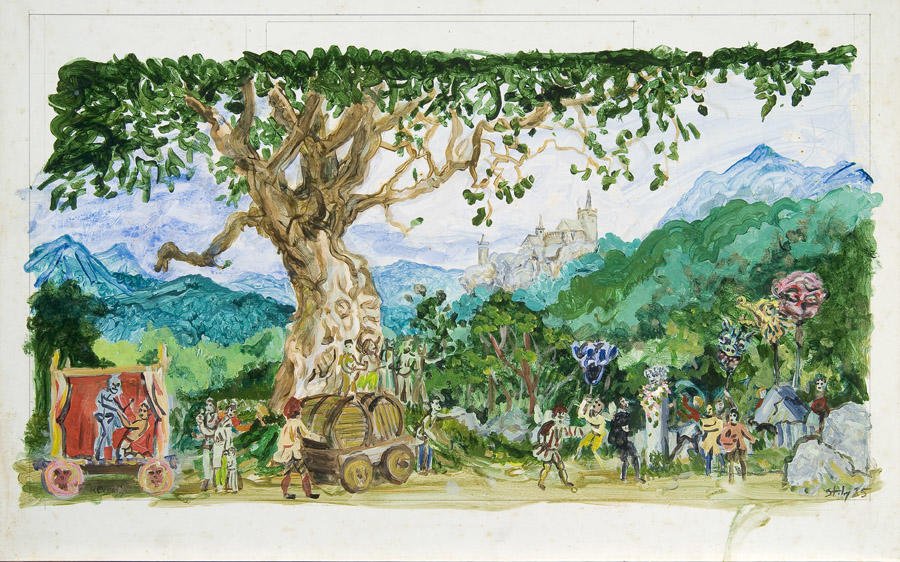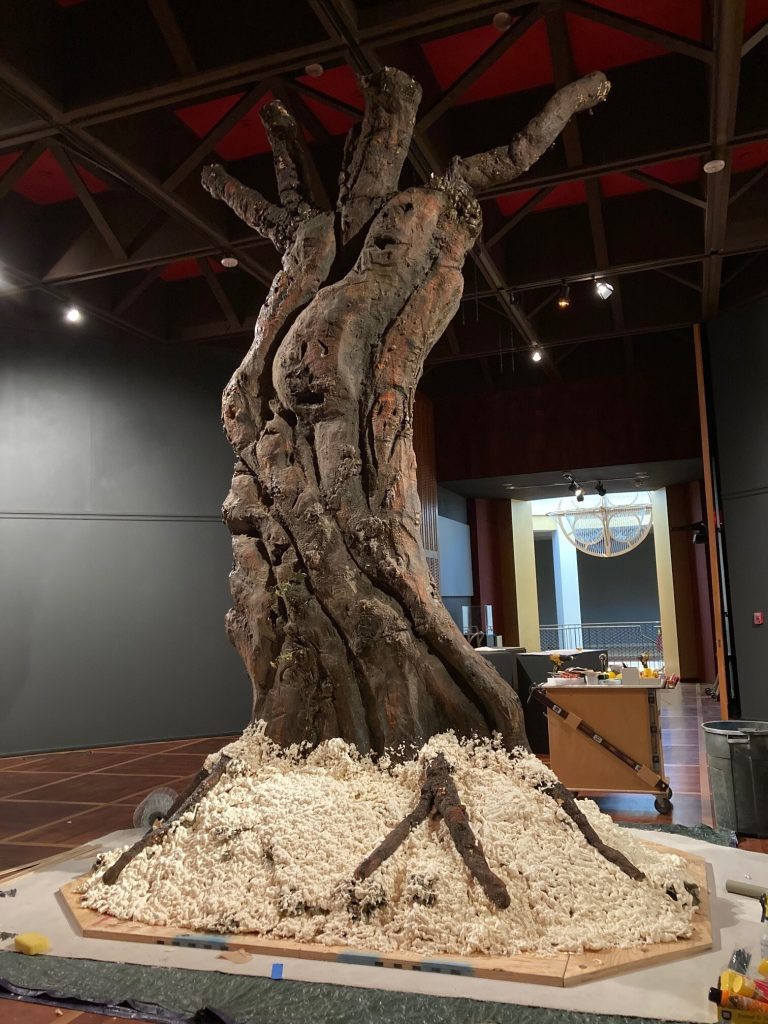
From the Page to the Stage
- September 8, 2021
by Dr. Scott Blackshire, Curator of The Tobin Collection of Theatre Arts
Make an impact. Donate today.

The primary inspiration for the McNay Art Museum’s current theatre arts exhibition, Is It Real? Staging Nature, came in the form of a sprawling tree that graced the The Tobin Center for the Performing Arts’ stage—a set piece created for opera performances, that you can see now rooted in the center of the McNay’s Brown Gallery. The faux tree was designed by scenic artist Earl Staley for a 1985 Houston Grand Opera production of Charles Gounod’s classic opera Faust. Over the next thirty-five years, “Marguerite’s” tree and the entire Faust set crisscrossed the United States, as a rental package sold to regional opera companies. Earl Staley’s Faust set graced its last stage in 2019, rented by Opera San Antonio.

In 2019, when I began working at the McNay I learned that Earl Staley’s iconic designs for this production of Faust were part of the world-renown Tobin Collection of Theatre Arts, named after the visionary arts advocate and San Antonio native Robert L. B. Tobin. Sadly, after the final San Antonio performance, the tired and slightly tattered set was destined for the dumpster. With that knowledge, I was compelled to find out whether the McNay could acquire the tree—and, if possible—figure out how I could use it in the context of an exhibition. It took two years to figure that out, because typically a team of stagehands and heavy equipment are deployed to build this enormous set piece!
The trunk itself is nearly 30 feet tall, and its multiple detachable and very, very heavy branches were designed for expansive performance spaces, like the Tobin Center. The tree’s canopy is created by a series of 20-foot-wide drapes—netting dripping with hand-painted fabric leaves, hung from stage rafters. When light is cast from different angles, in shades of blues and greens through the netting and leaves, the tree comes to life and transports audiences into the romantic and tragic world of the opera’s heroine, Marguerite… and that is the exact experience I wanted to give McNay visitors.

The tree rescue mission was approved and orchestrated by the McNay’s installation team, who brought a truck stuffed full of tree limbs and a ton of canopy netting to the Museum. Planning and redesigning the tree was put into the hands of the McNay’s exhibition fabricator John Dalton Atkins. John, an artist who creates large scale works, assured me that the tree could be hacked—literally and figuratively—and re-designed to fit in the Brown Gallery, a space with only a 15-foot-tall ceiling. John’s one question – could he get a welder? I was skeptical at first, but John designed and welded a formidable base that supports the tree’s steel skeleton and bark made from construction spray foam. After securing the trunk, John took parts of original branches and repurposed them, laying them at the base of the tree to replicate a root crown. The finishing touches required a wooden frame covered with chicken wire and canvas, that John hand-painted to resemble a forest floor – which was then adorned with moss and flowers. The result was, indeed, operatic and romantic.
What would have been tragic? Seeing this beautiful, exquisite set design in a dumpster! While we were not able to re-create Earl Staley’s original 30-foot ideal design, a 15-foot-tall version gives visitors the sense of being on stage. It also offers the chance to see how a designers idea moves from the page onto the stage. In this case, Staley’s hand-painted designs are displayed on the wall next to the re-production. Finally, as a way to show the technical detail that goes into building stage sets, the back of the tree remains open – exposing the layers of metal, wood, wire, foam, canvas, and paint making one of the most romantic and visually stunning illusions of nature ever designed—and built—for the stage and for you!